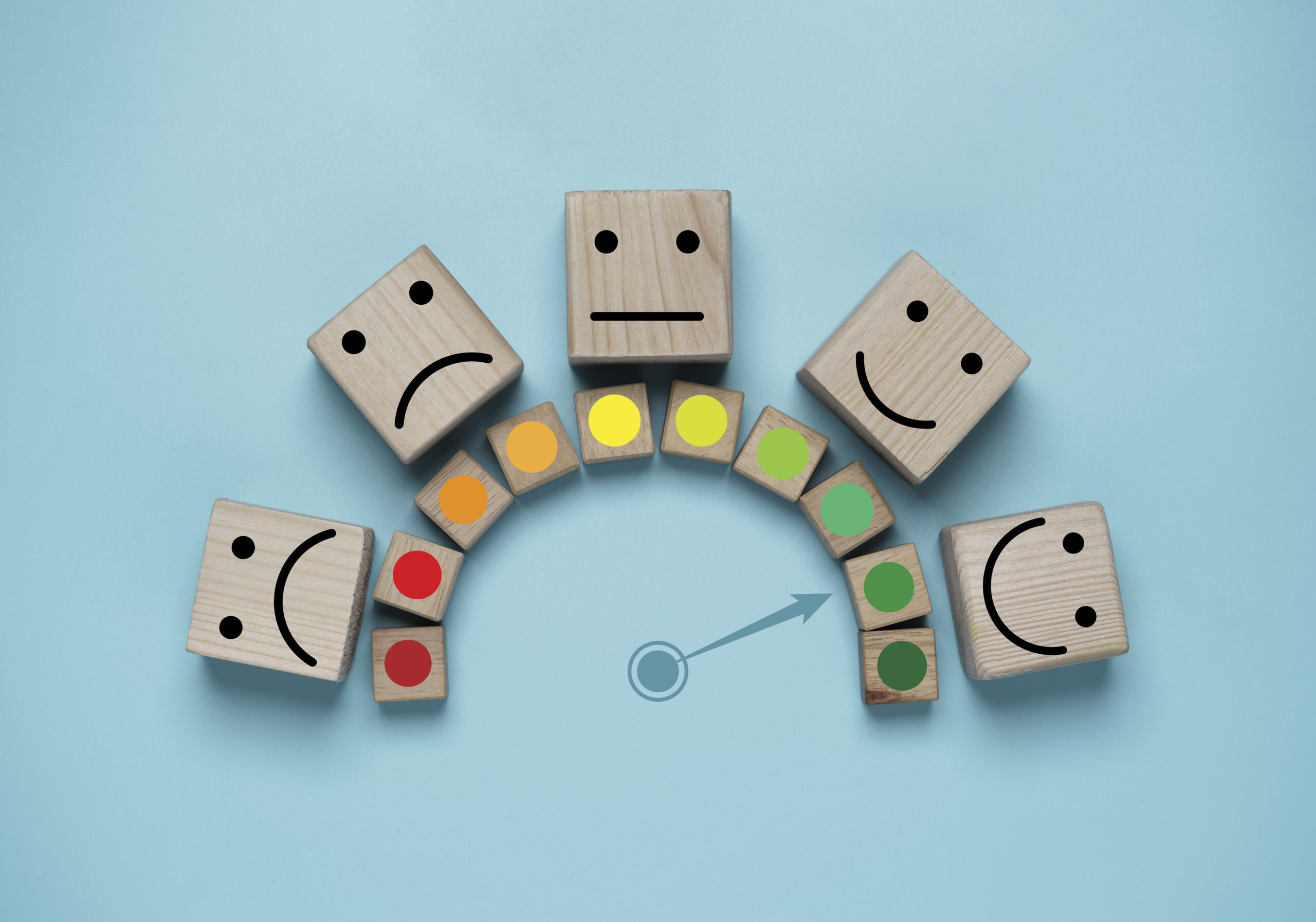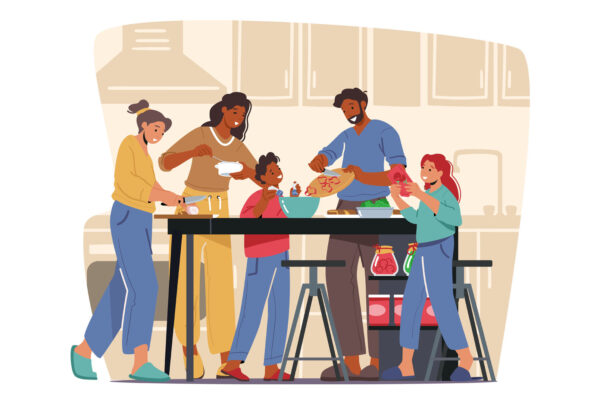Health equity is a term that has garnered much attention since the disparities in outcomes of the COVID-19 pandemic have become known. Since the early days of the pandemic, public health experts have noted that people of color were two to three times more likely to be hospitalized for and twice as likely to die from COVID (Milano, 2021). Although no one has been immune to the consequences of the pandemic, people of color and those with Hispanic origins have had a disproportionate burden to bear in terms of both physical and mental health.
According to data from the Centers for Disease Control and Prevention (CDC), Hispanic adults were much more likely to report symptoms of depression than non-Hispanic White adults in the uncertain and challenging early months of the pandemic – 59% as compared to 25% (Mental Health First Aid USA, 2021). COVID disproportionately impacted people of color living with mental illness, as isolation was compounded by economic strain and the grief that came with much loss of life of loved ones (McCray & Rosenberg, 2020). This impact was compounded by the fact that Black and Latinx people already had less access to needed mental health and substance abuse treatment and that they experience less culturally responsive care (Substance Abuse and Mental Health Services Administration, n.d.). Additionally, as of spring 2023, Americans of color are more likely to suffer the symptoms of long COVID and its respiratory, cardiovascular, neurological, digestive, and other symptoms (Tanne, 2023).
Pre-pandemic inequities in mental healthcare
While COVID clearly showed us where disparities in health existed in our communities, it did not cause those disparities. Research across many fields has shown that for decades, inequities in economic resources and neighborhood conditions have led to disparities in health outcomes. To effectively address these disparities, it is important to understand their root causes.
The CDC defines health equity as “the state in which everyone has a fair and just opportunity to attain their highest level of health” (CDC, n.d.). Health disparity, then, is the “preventable difference in the burden of disease, injury, violence, or opportunities to achieve optimal health that are experienced by populations that have been disadvantaged by their social or economic status, geographic location, and environment” (para. 2). The average life expectancy of individuals varies by community; people living just a few blocks away from one another may have radically different life expectancies (RWJF, n.d.; Hill et al., 2023). People experience health disparities based on their race, ethnicity, disability status, gender, sexual identity, immigration status, language, or other factors.
Although people with lower incomes often have less access to health care, health care access accounts for only about 20% of an individual’s health outcomes (American Hospital Association, 2020). Therefore, improving access to healthcare does not, on its own, solve the problem of inequity in health outcomes. Along with the 20% of health outcomes accounted for by access to health care, 30% of health outcomes are attributable to health behaviors (such as diet, exercise, and tobacco use); 10% are attributable to the physical environment (including safe housing, transportation, and air and water quality); and 40% are attributable to social and economic factors (including education, employment, income, and social support) (Givens et al., 2020).
To improve health outcomes for all individuals in a community, the underlying causes of poor health outcomes must be addressed. These social determinants of health affect not only physical health but also mental health. Thinking about mental health in the context of social determinants encourages us to view mental health as a state of well-being and to take a more holistic approach to ensure all people have what they need to remain mentally well and resilient.
Improving well-being leads to improved health
The National Prevention Council highlighted the impact of mental and emotional well-being on health; noting that “Mental and emotional well-being is essential to overall health. Positive mental health allows people to realize their full potential, cope with the stresses of life, work productively, and make meaningful contributions to their communities” (2014, para. 1). But mental health is more than just the mental health of individual people; we must look at the mental health of the whole community.
Georgetown University’s Center for Child and Human Development defines the mental health of a community as “the collective well-being of a community, as indicated by the aggregated well-being of the members of the community and community characteristics that are indicative of well-being (e.g., sense of belonging)” (Miles et al., 2010, p. xiv).
Furthering this concept of the well-being of an entire community, the Prevention Institute offers the following: “Building thriving communities helps foster mental health and wellbeing for everyone. When community members feel connected and have safe places to gather, and when they have access to affordable housing and good jobs, they experience less stress and anxiety. Conversely, exposure to repeated violence, displacement, and other traumas—or Adverse Childhood Experiences—undermines communities’ and individuals’ well-being” (Prevention Institute, n.d.). To better understand the impact of structural drivers on community determinants, and consequently health and safety outcomes and inequities in outcomes, the Prevention Institute developed the THRIVE framework, consisting of:
- social networks and trust,
- participation and willingness to act for the community good, and
- norms and culture.
Meanwhile, The Well-being in the Nation (WIN) Network, with colleagues from The Rippel Foundation, has developed a framework called Vital Conditions – the things people need to have the freedom to thrive. Vital conditions are properties of places and institutions that we all need all the time to reach our full potential, like food, humane housing, access to meaningful work, and wealth and a sense of belonging (WIN Network, n.d.).
Two of the vital conditions are particularly relevant when discussing community well-being:
- Belonging and Civic Muscle – which includes fulfilling relationships, social support, belonging to a community and contributing to its vibrancy, and living free from stigma discrimination and oppression.
- Basic Needs for Health and Safety – which includes what we need to live healthy lives, what makes a community safe and free from violence, crime, and hazards, and how to build and support communities in which people can be active and access the resources and care they need.
Finally, The Lupton Center at FCS Ministries (Duncan, 2022) addresses ways of creating neighborhood transformation that lasts. They look at the social indicators of a neighborhood through their Flourishing Neighborhood Index, which measures the health of the community across economic, social, and structural indicators:
- Economic factors include (1) housing, (2) employment, (3) household income, and (4) local commerce
- Social factors include (1) sense of place, (2) connectivity, (3) credible leadership, and (4) faith community
- Structural factors include (1) physical environment, (2) education, (3) health & social services, and (4) safety & security
Promoting Health Equity and Well-being in our Communities
When taken together, these frameworks all highlight the need to understand and address the characteristics and context of a neighborhood to foster and promote connectivity and a sense of belonging and well-being. Addressing and improving overall well-being in our communities can decrease both stigma and the burden on the mental health system.
When systems within a community (such as health care, education, housing, civic groups, government, non-profits, and faith-based organizations) work together, long-term improvements in health and mental health are possible.
 Cheryl Arndt, PhD
Cheryl Arndt, PhD
Community Partnership Data Strategy Analyst
Dr. Arndt has developed and led multiple social service, mental health, and dual diagnosis programs in the Lehigh Valley. Her BA, MA, and PhD are all in Psychology. Dr. Arndt is an experienced researcher who has conducted innovative studies internationally. She has been fortunate to work with community-based programs across the country, guiding them to effectively use their data to improve safety, performance, services, and impact.
 Samantha Shaak, PhD
Samantha Shaak, PhD
Director of Community Innovation & Evaluation
Dr. Shaak is an applied, translational researcher with interest and experience in initiatives that use cross-sector approaches to build community, using data to inform and mobilize community change. Shaak received her BA in Psychology from Georgetown University and her Doctor of Philosophy in Human Development and Family Studies from University of Connecticut.
 Edward F. Meehan, MPH
Edward F. Meehan, MPH
Executive Director
Mr. Meehan’s work has positively impacted health, wellness, and community development in the Lehigh Valley. As director of the former Pool Health Care Trust and of the Rider-Pool Foundation, he has overseen $175 million of investments which have had a demonstrable, dramatic, and sustained impact on the health of the citizens in the region. Meehan is passionate about keeping the social determinants of health at the forefront of community-wide discussions.
References
American Hospital Association (2020, February). Social determinants of health series: Promoting health behaviors. (Issue Brief.) SDOH_HealthyBehaviors_IssueBrief.pdf (aha.org)
Centers for Disease Control and Prevention. (n.d.). What is health equity? https://www.cdc.gov/healthequity/whatis/index.html
Duncan, S. (2022, June 16). What is the Flourishing neighborhood index? What is the Flourishing Neighborhood Index | Lupton Center
Givens, M., Gennuso, K., Johnson, S., & Brown, L. (2020). 2020 County health rankings: Key findings report. University of Wisconsin Population Health Institute. 2020 County Health Rankings Key Findings Report | County Health Rankings & Roadmaps
Hill, L., Ndugga, N., Artiga, S. (2023, March 15). Key data on health and health care by race and ethnicity. Kaiser Family Foundation. Key Data on Health and Health Care by Race and Ethnicity | KFF
McCray, C.I., & Rosenberg, L. (2020). A path forward: Mental health and the U.S. pandemic response. Journal of Behavioral Health Services & Research, 161-170. doi:10.1007/s11414-020-09747-9
Mental Health First Aid USA. (2021, July 6). The impact of COVID-19 on minority mental health. The Impact of COVID-19 on Minority Mental Health – Mental Health First Aid
Milano, B. (2021, April 22). With COVID spread, “racism—not race—is the risk factor.” The Harvard Gazette. https://news.harvard.edu/gazette/story/2021/04/with-covid-spread-racism-not-race-is-the-risk-factor/
Miles, J., Espiritu, R.C., Horen, N., Sebian, J., & Waetzig, E. (2010). A public health approach to children’s mental health: A conceptual framework. Georgetown University Center for Child and Human Development, National Technical Assistance Center for Children’s Mental Health. PH_monograph (georgetown.edu)
National Prevention Council. (2014, May). Mental and emotional well-being. Mental Well Being (wellstone.com)
The Prevention Institute. (n.d.). Mental health and wellbeing. Mental Health & Wellbeing | Prevention Institute
Robert Wood Johnson Foundation (n.d.) Life expectancy: Could where you live influence how long you live? Life Expectancy: Could where you live influence how long you live?
Substance Abuse and Mental Health Services Administration (n.d.). Double jeopardy: COVID-19 and behavioral health disparities for Black and Latino communities in the U.S. Double Jeopardy: COVID-19 and Behavioral Health Disparities for Black and Latino Communities in the U.S.
Tanne, J. H. (2023, March 6, p. 535). Covid-19: US studies show racial and ethnic disparities in long covid. BMJ. http://dx.doi.org/10.1136/bmj
Well Being in the Nation Network. (n.d.). Vital conditions. Vital Conditions — WIN NETWORK
——————————-
Leonard Parker Pool Institute for Health
The Leonard Parker Pool Institute for Health (LPPIH) was born out of the former Dorothy Rider Pool Health Care Trust, which was established by Pool to enable Lehigh Valley Hospital to be a superior regional hospital and to improve the health of the of the region. As the Trust was scheduled to sunset in 2025, LPPIH was established as a subsidiary organization of Lehigh Valley Health Network in 2021, to carry on Leonard Parker Pool and Dorothy Rider Pool’s legacy in perpetuity.
In order to maximize health outcomes for everyone in our region, LPPIH focuses on: cradle-to-college or career education, safe and healthy housing, community well-being, and food and nutrition. The Institute practices authentic community engagement, forging strong partnerships with local residents as it seeks to meet its vision of meaningful and sustained improvements in overall health in our region. LPPIH employs data—both numbers and stories—to more effectively understand neighborhoods and the lived experiences of their residents. And, the Institute strengthens cross-sector partnerships across local non-profits to collaboratively address the factors that affect health and well-being.
You can hear more about the work of the Leonard Parker Pool Institute for Health on its monthly podcast, HealthBeat on WDIY 88.1 FM or at www.wdiy.org.
— Cheryl Arndt






